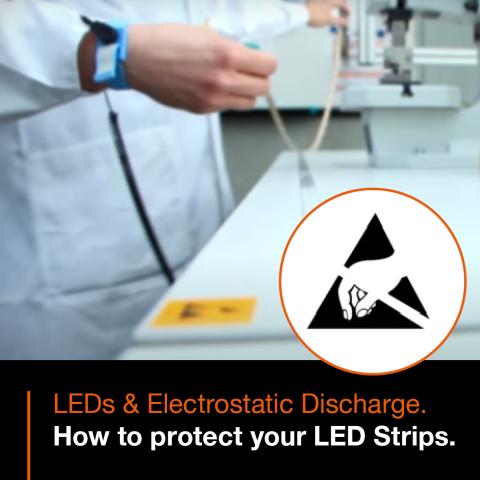LEDs & Electrostatic Discharge.
Do you Protect your LED Strips Correctly?

Electrostatic discharge (short ESD) is caused by charge equalization of two differently charged objects. This kind of discharge may happen in many situations: Certainly, you have also experienced a "spark" after you have unconsciously charged yourself through friction and then touched something conductive. But this is nothing compared to a flash of lightning during a thunderstorm, which has millions of volts and which is certainly one of the most extreme discharges.
With LEDs, however, much smaller and less noticeable discharges take place (from about 30 volts). For human beings, such an electrostatic discharge when touching LED strips is not harmful and usually not even noticeable. On the other hand, LED modules can quickly be damaged to a considerable degree - even at low charges. Low ESD damage is hardly noticeable at first, as the LED strips will stay conductive and glow, but they will then darken quickly. More serious ESD damage can even lead to total failure of the LEDs.
For protection against damage caused by electrostatic discharge, LED strips must be stored, processed and mounted in an ESD-protected environment. For example, take care to use an antistatic work surface during installation. In addition, dissipative wrist straps, grounded shoes or floor coverings or floor mats can prevent the threat of ESD damage inflicted by people.
You don't want to take any risks when processing your LED strips? Then get your wanted Radium LED strips assembled directly in our factory. The Radium LED strip production is perfectly set up for this: During professional assembly, we work exclusively in areas with appropriate ESD protection measures. Tip: Use our LED-Strip configurator to request your personal assembly.
Do you have any questions about ESD protection? Please, contact us via our Contact form then.

